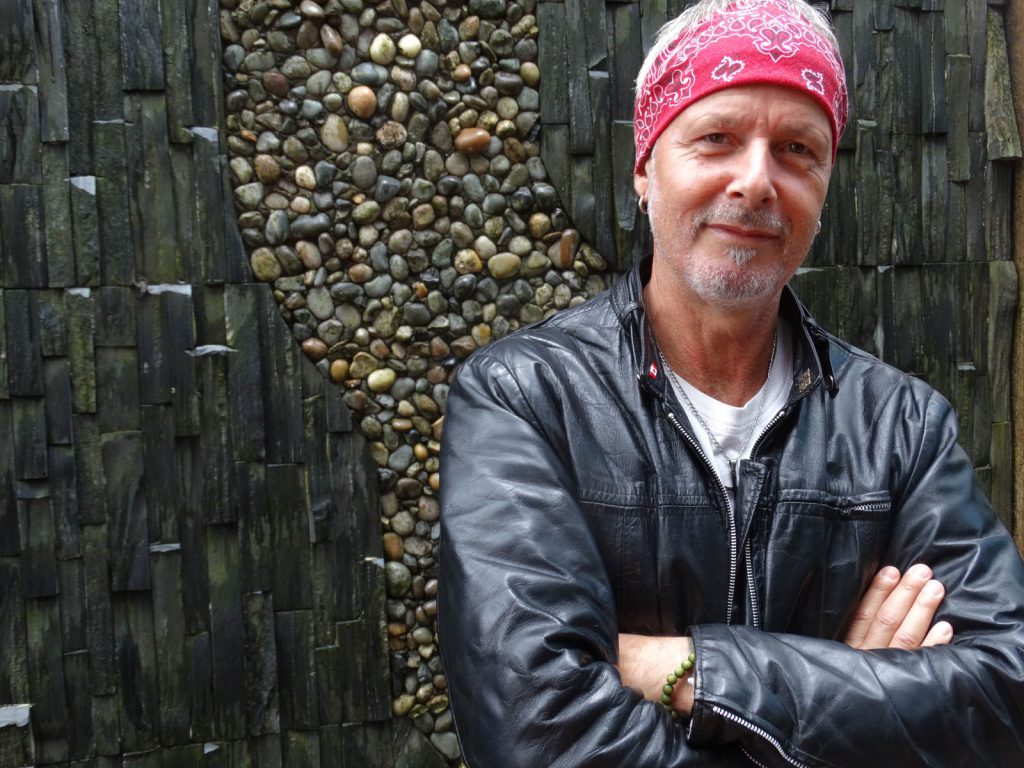 As an artist, Gary was a great candidate for Vancouver Native Housing Society’s Skwachàys Artists’ Lodge where he spent three years until the spring of 2015. As a resident artist, he worked with the lodge’s architect to design one of Vancouver’s most beautiful residences.
As an artist, Gary was a great candidate for Vancouver Native Housing Society’s Skwachàys Artists’ Lodge where he spent three years until the spring of 2015. As a resident artist, he worked with the lodge’s architect to design one of Vancouver’s most beautiful residences.
Gary’s life is now peaceful, but it wasn’t always the case. Gary’s father, a Métis from Buffalo Narrows (a small village six hours north of Saskatoon), was an angry man who drank and was violent to his wife and five children.
In addition to this violence, as a young boy, Gary endured years of sexual abuse and trauma that led to feelings of neglect and unworthiness that would take years to unravel. When he became an adult, he used alcohol to mask his pain.
Gary decided to quit drinking at the age of 23, when he had enough. He got his life together and found work becoming the youngest District Foreman in the City of Vancouver at the time. He eventually decided to leave his job, and drifted to what his soul craved – creating art.
At 28 years old, Gary decided to visit his dad, about half a block from where Skwachàys Lodge is located, to learn about his heritage. He subsequently took his first cross-country trip and visited Buffalo Narrows where he felt a familiarity and pull to his Aboriginal culture.
His experience of going to familial territory and meeting his relatives helped bring about forgiveness and changed his life. In 1991 he went to Capilano College for art school.
The synthesis of both First Nations and European cultures became the focus for his work. For his dad, there had been so much shame from being what Gary called a “half breed” – someone who is not accepted in either the First Nations or European community. Instead, Gary decided to embrace his culture and broke out of this heavy, ominous legacy.
Gary’s life took another turn when, in his late 30s, stress and a bad injury led him to using prescription painkillers. His doctor prescribed him Tylenol with codeine. The pain killer led him down a long road of dealing with addictions again, this time to both prescription and non-prescription drugs.
A big day of growth came last March while he was living at Skwachàys, when a friend passed away from drug use, and Gary decided that he didn’t want his own mother to find him like that. When the prescription painkillers weren’t available, he would use heroin and, on that particular day in March, he awoke after passing out from too much heroin. He realized that he could have died. He knew that he wanted a change, and that he had the support around him to do this.
While at Skwachàys, Gary was also involved in creating some of the artwork in the hotel suites and common areas. Gary’s art comes from a process of trust, something that he is realizing works best in his own life as well. As he put it, his art forces him to let go because, in the process of creating art, things come that he couldn’t imagine before, much like in his life right now.
“There’s always this relationship between my making art and asking if I can live my life the way I create my art. If I stay open, the universe has wonderful surprises for me, just like my art has wonderful surprises for me. I don’t know where I am going, but I am going to trust that it will lead me to something good.”
In September, Gary moved into independent housing near Main and Broadway. He loves his new home, which is away from the Downtown Eastside. He feels completely different there – it’s big and bright, even when it’s overcast and best of all, he loves the community which is full of vibrant young faces. He has already met and connected with many of his neighbours in his building.
While he’s had a challenging life, he likes to focus on the positive these days, “Old wounds never go away – as a matter-of-fact you can build careers on them,” says Gary.
Gary’s next gallery opening will take place at the Urban Aboriginal Fair Trade Gallery, which is in the same building as Skwachàys Lodge on December 11th, 2015, and the show will be open for about a month after that.
